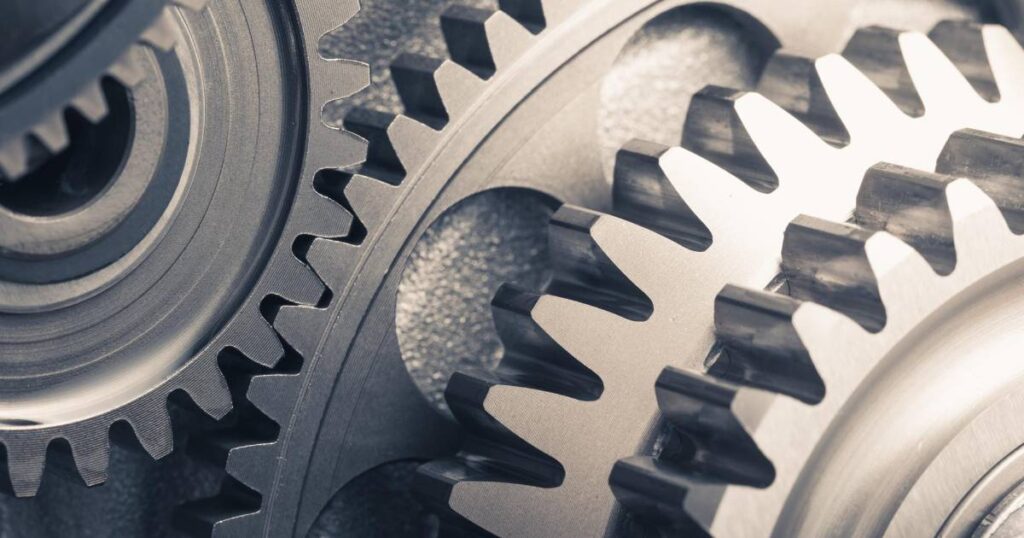Causes
Solidification shrinkage: The carbon content of medium carbon steel is between 0.25% and 0.60%. When solidifying, the liquid state changes to solid state and the volume shrinks. If the liquid metal is not replenished enough during the solidification process, shrinkage holes will be formed inside or on the surface of the casting.
Cooling rate: If the cooling rate is too fast, the surface of the casting will solidify quickly to form a hard shell. The internal molten metal cannot be smoothly replenished to the shrinkage part due to the obstruction of the shrinkage channel, which is easy to produce shrinkage holes.
Chemical composition: In addition to carbon, manganese and silicon content affect medium carbon steel solidification. Changes in these elements alter the steel’s shrinkage rate during solidification. Increased shrinkage tendency raises the risk of shrinkage defects forming.
Pouring process: If the pouring temperature is too high, molten metal shrinkage increases and solidification time extends. This makes shrinkage difficult. If pouring speed is too slow, early molten metal solidifies and blocks later metal shrinkage, causing shrinkage holes.
Preventive measures
Reasonable design of casting structure: make the wall thickness of the casting uniform, avoid local excessive thickness to form hot nodes, and for unavoidable thick and large parts, reasonable transition fillets or reinforcing ribs can be set to improve the solidification sequence and promote shrinkage compensation.
Optimize casting process: determine the appropriate pouring temperature and speed according to the structure and material of the casting. Generally, the pouring temperature of medium carbon steel is controlled at 1500-1550℃. Under the premise of ensuring filling, the pouring temperature should be reduced as much as possible. Set risers properly to supply enough shrinkage compensation molten metal. Use chill irons to control solidification sequence. Ensure castings solidify sequentially and riser metal feeds the last solidified area first.
Control chemical composition: strictly control the content of carbon and other alloying elements in medium carbon steel, ensure that the composition is within a reasonable range, add appropriate amounts of inoculants and modifiers, refine the grains, improve the solidification structure, and reduce the tendency of shrinkage.
Improve smelting quality: use advanced smelting equipment and processes to improve the purity of molten metal, reduce the content of gas and impurities, and reduce the risk of shrinkage caused by gas precipitation and impurity accumulation.
Measures for preventing and controlling pore defects in medium carbon steel coated sand
To prevent and control pore defects in coated sand, we can start from raw material selection, process control, mold design and maintenance, etc. The specific methods are as follows:
Raw material control
Select high-quality coated sand: Select coated sand with uniform particle size, low mud content and low gas emission, and strictly test its various performance indicators to ensure stable quality.
Control the amount of binder: Accurately control the amount of binder added. Too much will increase the gas emission and cause pore defects, while too little will affect the strength of the sand mold.
Ensure that the raw sand is dry: The moisture content of the raw sand should be controlled below 0.2%, and it should be fully dried before use to prevent the moisture from forming water vapor during pouring and generating pores.
Process optimization
Reasonable sand mixing process: Use dry mixing first, then wet mixing, to evenly coat resin on sand particles. Control sand mixing time carefully. Overmixing causes binder agglomeration; undermixing leads to uneven resin coating.
Optimize the core making process: strictly control the core making temperature and time. If the temperature is too high or the time is too long, the coated sand will be locally overheated and the gas emission will increase; if the temperature is too low or too short, the sand core strength is insufficient and pores are easily generated.
Optimize the pouring process: Control pouring temperature and speed based on casting structure and size. Avoid excessive temperature to reduce coated sand gas emission. Prevent overly fast pouring to avoid gas being drawn in.
Mold design and maintenance
Optimize the mold structure: reasonably design the mold parting surface, exhaust system, etc. to ensure that the gas can be discharged smoothly. Increase the number and size of exhaust grooves, and set exhaust plugs where gas is easy to gather.
Ensure the smoothness of the mold: regularly clean and maintain the mold to prevent debris, oil stains, etc. from adhering to the mold surface, affecting the sand core molding and gas discharge. Clean after each use and polish the mold regularly.
Environmental and operation control
Control the production environment: Maintain workshop temperature between 20-30℃ and relative humidity at 40%-60%. Excessive humidity causes coated sand to absorb moisture. Moisture absorption increases the risk of pore formation.
Standardize the operation process: Operators must undergo professional training and operate in strict accordance with the process requirements. For example, during the sand filling and compaction process, the compaction of the sand core must be uniform to avoid local looseness or tightness that will cause the gas to be unable to be discharged normally.
In the production of medium carbon steel, the relevant indicators of coated sand are:
Compactness rate: Generally controlled between 45%-55%.
Mesh: For simple medium carbon steel castings, use 20–32 mesh and 50–100 mesh medium sands. For complex, thin-walled castings, use 40–60 mesh and 100–200 mesh fine sands.
Strength: Room temperature tensile strength, in most cases 2.0-3.5MPa is more appropriate; for complex shaped, thin-walled steel castings, it needs to reach 3.0-4.0MPa. At the pouring temperature of medium carbon steel (1500-1650°C), the high temperature strength is usually 0.5-1.5MPa.
Permeability index: For simple small and medium-sized castings, the permeability is generally around 50-150. For medium carbon steel castings with complex structures and high gas discharge requirements, the permeability may need to reach 150-300 or even higher.

